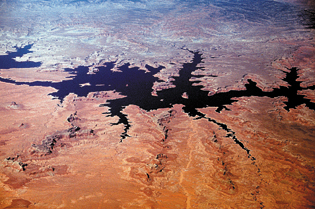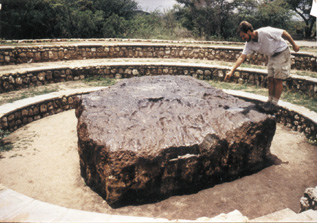Every month, we'd like to feature one of your photos from anywhere in the world and invite other readers to guess where it was taken. Look every month in the print Geotimes for a new photo. Following are clues, answers and winners from past issues.


| Do you have slides and photos
you've collected from field work or vacations?
Every month, we'd like to feature one of your photos from anywhere in the world and invite other readers to guess where it was taken. Look every month in the print Geotimes for a new photo. Following are clues, answers and winners from past issues. |
 |
| Send answers for the May 2003 Where on Earth? contest,
which appears the print magazine, to Geotimes by May 26 (or postmarked by
this date). From those answers, Geotimes staff will draw the names of 10
people who will win Where on Earth? T-shirts. And from those 10 names, we
will draw the names of two people who will win a Brunton
compass.
Click here
to submit a guess for this month's Where on Earth?
contest. Submit
photos for Where on Earth? |

|
Clues:
1. By this spring, prolonged drought had dropped the water level in this desert lake by nearly 100 feet, leaving it half empty. 2. The most common rock type in the area formed from a sand sea during the Jurassic period. 3. More recent sediments are filling the dammed lake at a rate that some say could fill it within 100 years. Others argue it could take 700 years.
Scroll down for the answer
|
|
Answer:
Lake Powell in Utah. Photo is by Bruce Molnia of USGS and was supplied
courtesy of the American Geological Institute archives. |

|
Clues:
1. The object in this photograph weighs more than 50 tons, has a volume of 9 cubic meters and hit the ground about 80,000 years ago. 2. It is made up of 82 percent iron, 16 percent nickel and 1 percent cobalt as well as various trace elements. Its main minerals are kamacite and taenite. Thin sections show intergrowth of the kamacite and taenite needles in Widmanstätten structure. 3. It is located in the world’s second most sparsely populated country. .
Scroll down for the answer
|
|
Answer: Hoba Meteorite, Namibia |
 |
Geotimes Home | AGI Home | Information Services | Geoscience Education | Public Policy | Programs | Publications | Careers |